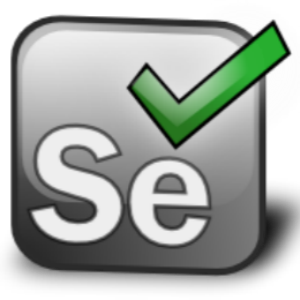What is API Testing ?
As we know API stands for Application Programming Interface which acts as an intermediate of communication between two applications. Due to this intermediary role of API (Application Programming Interface) two applications talk to each other and performs the required actions efficiently. API contains a set of rules and guidelines based on which the applications are developed. So in simple we can say an API acts as an interface between two software applications so that two software applications can communicate with each other.
API Testing Methods :
● POST
● GET
● PUT
● PATCH
● DELETE
● OPTIONS
● HEAD
● TRACE
● CONNECT
● COPY
● LINK
● UNLINK
● PURGE
● LOCK
● UNLOCK
● PROPFIND
● VIEW
API Data Input Formats :
● Text - Text(text/Plain)
● JSON (application/json)
● Javascript (application/javascript)
● XML (application/xml) - XML (text/xml)
● HTML (text/html)
HTTP Status Codes
1. Informational responses (100 – 199)
2. Successful responses (200 – 299)
3. Redirection messages (300 – 399)
4. Client error responses (400 – 499)
5. Server error responses (500 – 599)
1xx Informational
100 Continue
101 Switching Protocols
102 Processing (WebDAV)
2xx Success
200 OK
201 Created
202 Accepted
203 Non-Authoritative Information
204 No Content
205 Reset Content
206 Partial Content
207 Multi-Status (WebDAV)
208 Already Reported (WebDAV)
226 IM Used
3xx Redirection
300 Multiple Choices
301 Moved Permanently
302 Found
303 See Other
304 Not Modified
305 Use Proxy
306 (Unused)
307 Temporary Redirect
308 Permanent Redirect (experimental)
4xx Client Error
400 Bad Request
401 Unauthorized
402 Payment Required
403 Forbidden
404 Page Not Found
405 Method Not Allowed
406 Not Acceptable
407 Proxy Authentication Required
408 Request Timeout
409 Conflict
410 Gone
411 Length Required
412 Precondition Failed
413 Request Entity Too Large
414 Request-URI Too Long
415 Unsupported Media Type
416 Requested Range Not Satisfiable
417 Expectation Failed
418 I'm a teapot (RFC 2324)
420 Enhance Your Calm (Twitter)
422 Unprocessable Entity (WebDAV)
423 Locked (WebDAV)
424 Failed Dependency (WebDAV)
425 Reserved for WebDAV
426 Upgrade Required
428 Precondition Required
429 Too Many Requests
431 Request Header Fields Too Large
444 No Response (Nginx)
449 Retry With (Microsoft)
450 Blocked by Windows Parental Controls (Microsoft)
451 Unavailable For Legal Reasons
499 Client Closed Request (Nginx)
5xx Server Error
500 Internal Server Error
501 Not Implemented
502 Bad Gateway
503 Service Unavailable
504 Gateway Timeout
505 HTTP Version Not Supported
506 Variant Also Negotiates (Experimental)
507 Insufficient Storage (WebDAV)
508 Loop Detected (WebDAV)
509 Bandwidth Limit Exceeded (Apache)
510 Not Extended
511 Network Authentication Required
598 Network read timeout error
599 Network connect timeout error
Create Bulk Data for Json Formate :
{
"operations": [
{
"id": "13",
"email": "techlearn.india@gmail.com",
"first_name": "tech",
"last_name": "learn",
"avatar": "https://techlearn.in/img/faces/techlearn-image.jpg"
},
{
"id": "14",
"email": "seleniumlearn.com@gmail.com",
"first_name": "selenium",
"last_name": "learn",
"avatar":"https://techlearn.in/img/faces/seleniumlearn-image.jpg"
}
]
}
API Testing Notes
HTTP Methods in API Development and Testing:
HTTP (Hypertext Transfer Protocol) specifies a collection of request methods to specify what action is to be performed on a particular resource. The most commonly used HTTP request methods are GET, POST, PUT, PATCH, and DELETE. These are equivalent to the CRUD operations (create, read, update, and delete).
1. GET
The GET method is used to ‘retrieve’ a record or a collection of records from the server.
GET request is used to read/retrieve data from a web server. GET returns an HTTP status code of 200 (OK) if the data is successfully retrieved from the server.
2. POST
The POST method sends data to create a ‘new record‘ on the server.
POST request is used to send data (file, form data, etc.) to the server. On successful creation, it returns an HTTP status code of 201.
3. PUT
The PUT method sends data to update an ‘existing record‘ on the server.
A PUT request is used to modify the data on the server. It replaces the entire content at a particular location with data that is passed in the body payload. If there are no resources that match the request, it will generate one.
4. PATCH
Like the PUT method, PATCH is also used to send data to update an ‘existing record’ on the server. But the important difference between PUT and PATCH is that PATCH only applies partial modifications to the record instead of replacing the whole record.
PATCH is similar to PUT request, but the only difference is, it modifies a part of the data. It will only replace the content that you want to update.
5. DELETE
The DELETE method is used to delete record(s) from the server.
A DELETE request is used to delete the data on the server at a specified location.
 Selenium-Java : 4.18.1
Selenium-Java : 4.18.1

 Selenium-Java : 4.18.1
Selenium-Java : 4.18.1